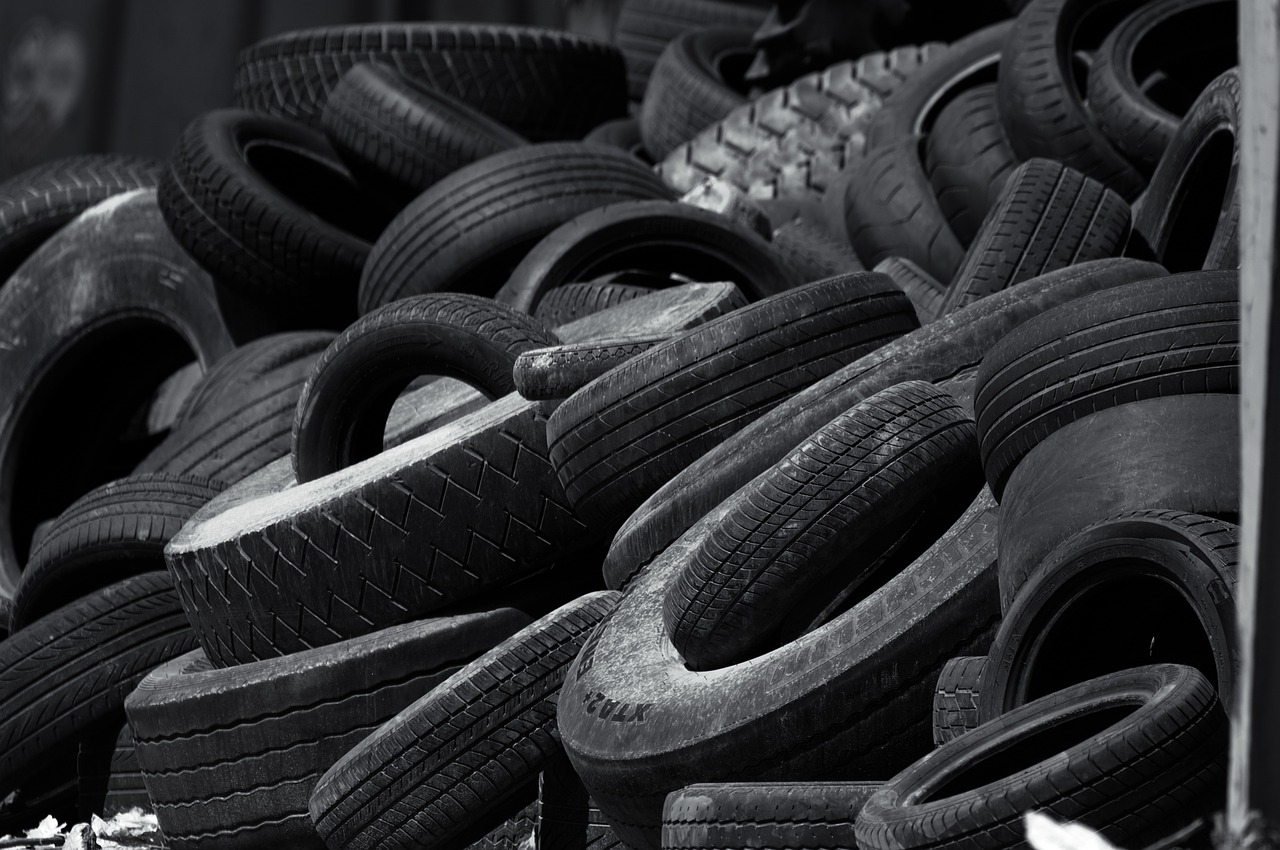
End-of-life tyres (ELTs) can be turned into valuable carbon black, gas, steel and oil by heating the feedstock at high temperatures in an oxygen-free chamber until it undergoes thermal decomposition, using a process known as pyrolysis.
The outputs of scrap tyre pyrolysis can substitute more polluting and carbon-intensive fuels, making it a greener alternative to coal mining, for example. However, there is evidence that poorly regulated and obsolete batch pyrolysis plants are causing serious environmental harm in countries such as India.
How does waste tyre pyrolysis work?
Waste tyres, either whole or ground up, are fed into a heated pyrolysis reactor that catalyses chemical reactions, breaking down the vulcanising bonds in the tyre rubber. Because the atmosphere inside the chamber is inert and oxygen-free, the polymers inside the tyre don’t burn. Roughly 85% of tyre components are based on petroleum or polymers, which after pyrolysis result in pyrolytic oil and gas.
Pyrolysis products and their uses
Carbon black (rCB) is used to manufacture new tyres as a substitute for medium-grade virgin carbon black (vCB) which is produced from fossil fuels. Recovered steel from the tyre can be recycled for manufacturing purposes, while high-quality pyrolysis oil can be used as vehicle fuel, or to produce fine-grade vCB. Pyrolytic gas is often used to run the energy-intensive pyrolysis process itself, thereby reducing costs and lowering the plant’s carbon footprint.
Batch pyrolysis and continuous pyrolysis
Smaller, more labour-intensive pyrolysis plants use batches – or fixed quantities of feedstock – for pyrolysis and recovery of the end-products. These batch pyrolysis plants tend to be more polluting and inefficient than modern continuous pyrolysis plants that operate on a larger scale, with generally higher safety standards and environmental protections, delivering higher quality products. Batch pyrolysis plants typically use whole tyres as feedstock, and many are found in low and middle income countries.
Where do waste tyres end up?
Because waste tyres are not biodegradable, recycling alternatives to pyrolysis on an industrial scale are mainly limited to retreading, so they can be re-used for transportation, or crumbing where the whole tyre is processed into small pieces for use in civil engineering, such as rubberised asphalt. In the UK, the market for these uses is limited, partly due to the cost of processing tyres. Exporting them as whole tyres tends to be the cheaper disposal option.
ELT exports to India
UK and EU exports of scrap tyres to India have been growing rapidly, raising concerns about their use in India’s large informal economy, either on vehicles, raising safety risks, or as feedstock in unregulated pyrolysis plants, creating pollution. In India, it is illegal to use imported whole scrap tyres for pyrolysis, but data from India’s Automotive Tyre Manufacturers’ Association (ATMA) suggest that the rules are frequently ignored, undermining the credibility of India’s Extended Producer Responsibility scheme for waste tyres. A BBC investigation into batch pyrolysis plants came to a similar conclusion.
T8 waste exemption
The UK Tyre Recovery Association has argued that exports of whole scrap tyres to low and middle income countries are being encouraged by the widespread use of T8 waste exemptions that make it hard to trace where end-of-life tyres come from. It is argued that eliminating the T8 exemption in England and Wales, as it was in Scotland in 2016, will encourage operators to process tyres in the UK.
Mandatory digital waste tracking
The UK’s Department of Environment, Food and Rural Affairs (Defra) plans to launch mandatory digital waste tracking (MDWT) in April 2026, which it is envisaged will eventually phase out T8 exemptions and existing waste tracking documentation, such as waste transfer notes and annex VII documents, in favour of a unified digital database. Deadlines for the roll-out of MDWT have been pushed back before, however. Meanwhile, proposals to introduce an electronic chain of custody system to enable transboundary waste tracking have met with resistance from global trade participants who don’t stand to benefit from enhanced efficiency and transparency.


